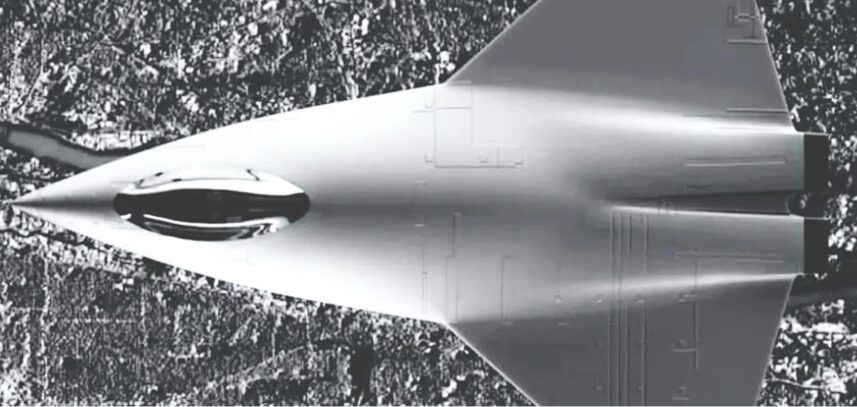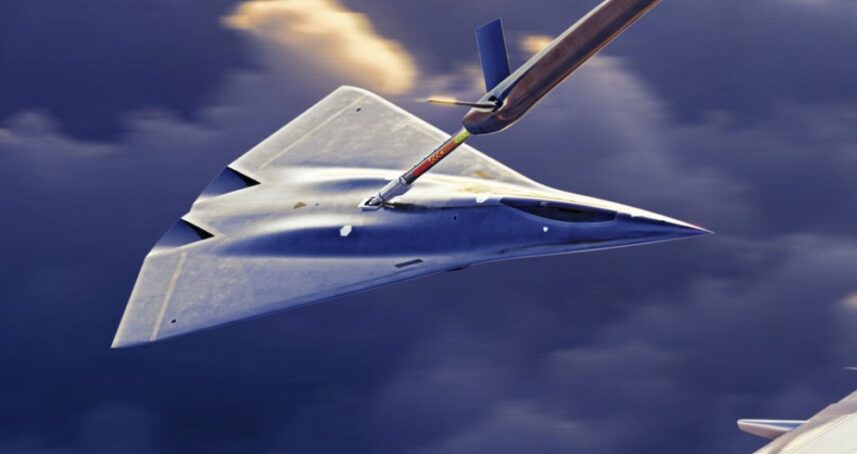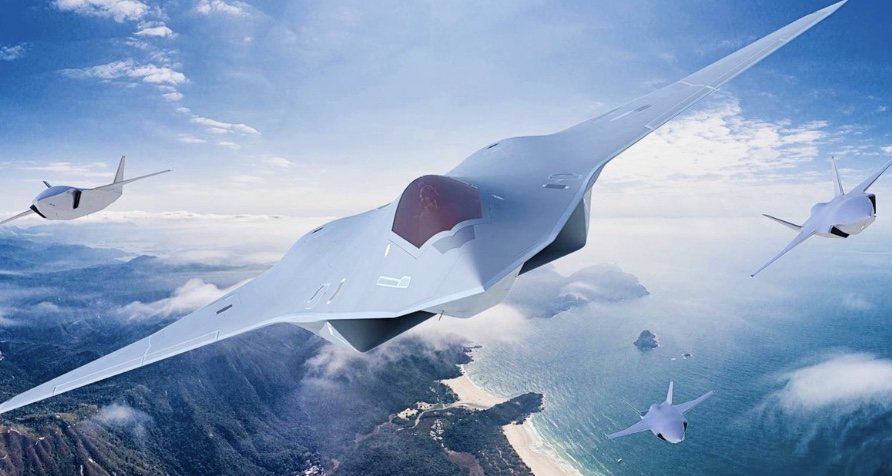
(by Francesco Matera) In the world of military aviation, the search for next generation fighters is a constant commitment. One such project that has gotten significant attention is the program Next Generation Air Dominance (NGAD) of the United States. As technology advances and threats evolve, US Defense seeks to maintain its global air superiority. At the moment in the USA there are three prototypes that will try to overcome the strict assessments of the Pentagon for the assignment of the maxi order for the aircraft of the future.
The Next Generation Air Dominance (NGAD) is an ambitious initiative undertaken by the US Department of Defense to develop a next-generation fighter that will replace existing aircraft, such as theF-22 Raptor andF-35 Lightning II. The program aims to harness cutting-edge technologies to create a new generation of fighters capable of outdoing adversaries in all areas of air combat. The site world defense news analyzed the three stars and stripes programs.
Prototype XYZ-500
The XYZ-500 incorporates several innovative features. It boasts enhanced stealth capabilities, leveraging advanced composite materials and an aerodynamic design to minimize the cross section of radars. Additionally, the XYZ-500 integrates advanced sensors and avionics, which enable superior situational awareness and increased data fusion capability. Its advanced propulsion system offers increased speed and range, while its next-generation weapon systems ensure unmatched accuracy and firepower.
Alpha-7 prototype
The Alpha-7 focuses on exceptional maneuverability and adaptability. Equipped with technology thrust vectoring, is capable of performing agile maneuvers, allowing pilots to effectively outrun opponents. The Alpha-7 also incorporates advanced sensor fusion, enabling real-time data analysis to aid decision making. Its enhanced communication and networking capabilities ensure seamless integration into joint forces operations.
Bravo-9 prototype
Bravo-9 focuses more on integrating artificial intelligence (AI). Leverage AI algorithms to process large amounts of data, enabling faster decision-making with strong autonomous capabilities. The Bravo-9's advanced AI systems can analyze complex battlefield scenarios, predict enemy intentions, and adapt to changing situations in real time. The integrated man-machine capabilities of this prototype redefine the concept of aerial combat.

The futuristic innovations used by the American prototypes
All three NGAD program prototypes demonstrate significant technological advances. From advanced materials to propulsion systems and avionics, each project pushes the envelope of fighter jet development. These advances ensure greater survivability, operational effectiveness, and lethality on the modern battlefield.
Stealth capabilities
Stealth capabilities play a crucial role in next generation fighters. By reducing radar and infrared signatures, these aircraft can operate undetected in hostile environments. The XYZ-500, Alpha-7 and Bravo-9 all incorporate cutting-edge stealth technologies, allowing them to penetrate enemy defenses with minimal detection, giving the US military a distinct advantage in aerial engagements.
Improved maneuverability
Agility and maneuverability are essential characteristics for a fighter aircraft. The Alpha-7, with its thrust vectoring technology, allows pilots to execute high-G maneuvers with precision and control. This capability provides a tactical advantage, allowing pilots to gain advantageous positions during air-to-air engagements. The XYZ-500 and Bravo-9 also feature increased maneuverability, making them formidable opponents in dogfights.
Advanced avionics
Next-generation fighters require advanced avionics systems to process large amounts of data and provide pilots with real-time situational awareness. The XYZ-500, Alpha-7 and Bravo-9 integrate advanced sensor fusion, data analysis and networking functions, enabling pilots to make decisions quickly. These avionics systems enhance combat effectiveness and facilitate coordinated operations with other platforms.
Next-Gen Weapon Systems
The NGAD program focuses on developing advanced weapon systems capable of addressing multiple threats simultaneously. All three prototypes incorporate next-generation weapons, from air-to-air missiles to precision-guided munitions. These advanced weapon systems provide greater firepower and accuracy, allowing pilots to neutralize targets with minimal collateral damage.
Artificial intelligence integration
Artificial intelligence plays a vital role in NGAD prototypes. The Bravo-9, in particular, shows the potential of integrating artificial intelligence into next-generation fighter jets. Leveraging machine learning algorithms, the Bravo-9 is able to analyze large amounts of data and assist pilots in making split-second decisions. The integration of AI augments human capabilities, creating a symbiotic relationship between man and machine on the battlefield.
The implications for dogfighting doctrine
The development of next-generation fighter jets through the NGAD program will reshape air warfare doctrine. These advanced aircraft will offer unmatched capabilities, providing the US military with a significant advantage over potential adversaries. Their stealth, manoeuvrability, advanced avionics and artificial intelligence integration will revolutionize aerial combat, ensuring air superiority and enhancing the effectiveness of joint force operations.
GCAP, the Italy-UK and Japan programme
Italy, the United Kingdom and Japan, three nations that boast some of the best air forces in the world, do not want to be left behind. At the end of 2022 they launched the joint military program Global Combat Air Program (GCAP), in order to develop a sixth generation jet by 2035. An amalgamation of the English program Tempest British-led with the program FX of Japan.
The aircraft under development is not a simple fighter but the in-flight synthesis of various multi-domain technologies capable of being able to govern swarms of armed drones from above, or to conduct powerful cybernetic attacks and much, much more.
In Gcap studies and projects elaborated for the Tempest in the United Kingdom and the Japanese ones for the FX will co-flow. Italian participation as first player the Gcap will allow the Italian defense industry to take a further step forward, thus establishing itself in a privileged position among the international industries in the sector.
In England Leonardo for the Tempest program it is already present with various companies and the people who will work on the program over the next 25 years will reach 20 thousand units, considering the employees of Mitsubishi Electric, Mitsubishi Heavy Industries e Hey in Japan, Leonardo, Avio Aero, Electronics ed MBDA Italy.
The Tempest is a British program, financed with Defense funds for the development of new technologies entrusted to a team of companies in which it plays an important role Leonardo, which has 7 factories in the UK. Those in Edinburgh and Luton will be most involved in the Tempest programme. Bae Systems will take care of the development of the airframe and the aircraft as such, Rolls Royce of the engine and MBDA of onboard armaments (missiles but also lasers) and Leonardo will have an exclusive role in the sector of onboard electronic systems.
In Italy, in the multi-year planning document (Dpp) for Defense for the three-year period 2022-2026, the resources allocated for the Tempest go from 2 billion euros to 3,795 billion, with 220 million in 2022 and 345 for the next.
Italy has doubled the resources from two billion euros, distributed over fifteen years, with 20 million in 2021, as many in 2022 and 2023, 90 million in the two-year period 2024-26 and the remainder between 2027 and 2035.
Italy has been following the Tempest program for years, in stark contrast to the French-German-Spanish one called FCAS.
Franco-German-Spanish FACS programme
FACS - Future Air Combat System is France and Germany's program for a new fighter which Spain also joined later.
France and Germany signed a contract to develop a joint weapon system in 2018, securing a first study project contract worth €65 million (US$73 million) for Airbus and Dassault, while Safran Aircraft Engines and MTU Aero Engines have announced a partnership to provide the propulsion.
The FCAS program covers both manned and unmanned aircraft, and will enter service from 2040 to replace fighters French drafts and to the Euro Fighter currently owned by the German Air Force.
Subscribe to our newsletter!
